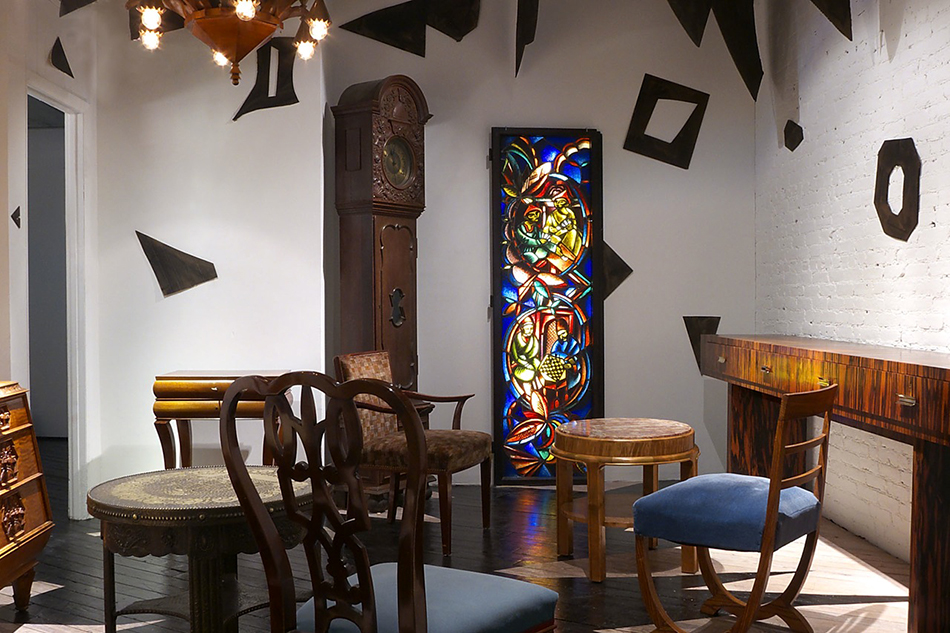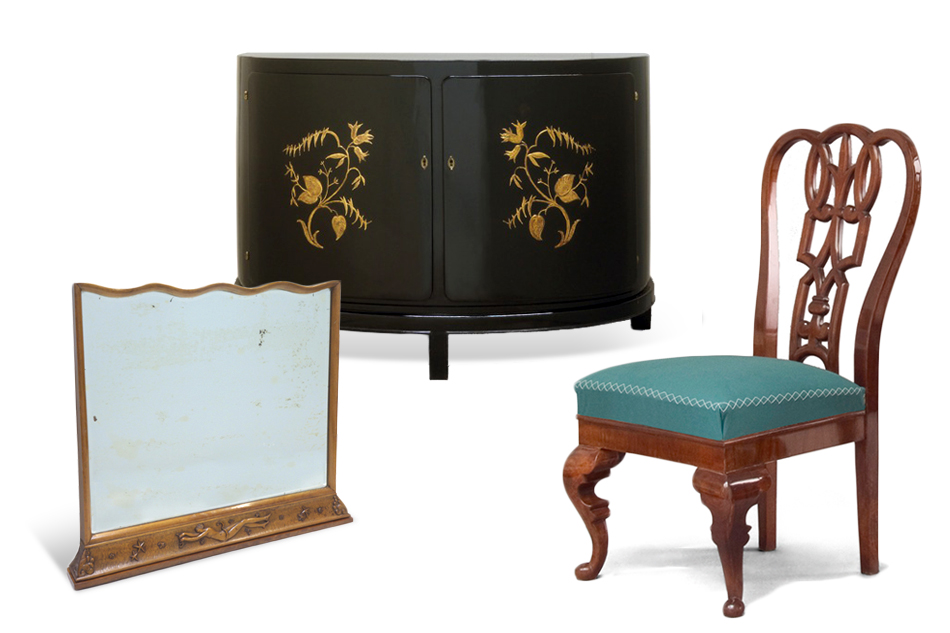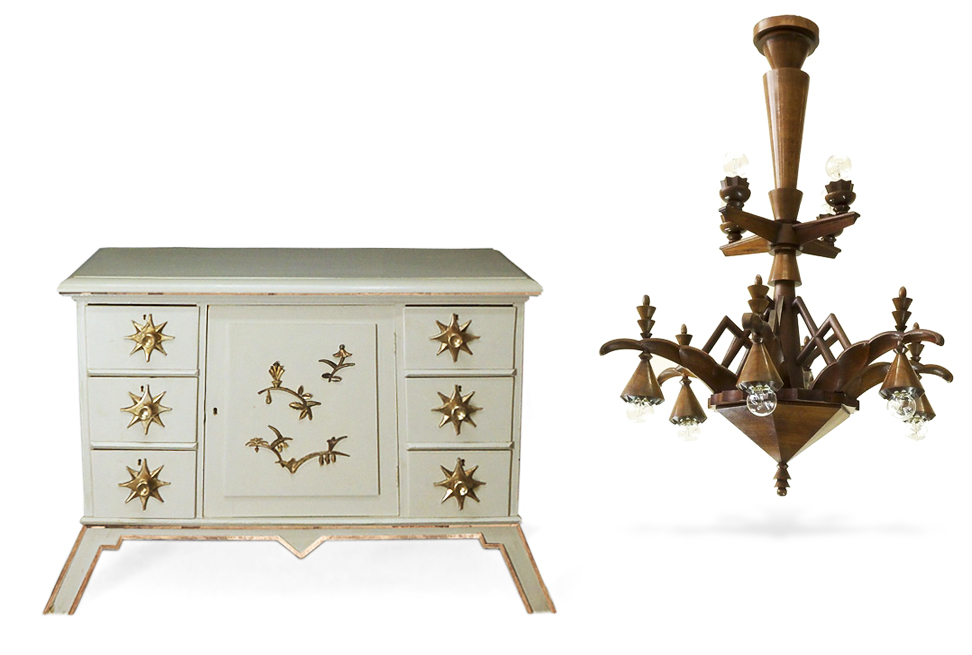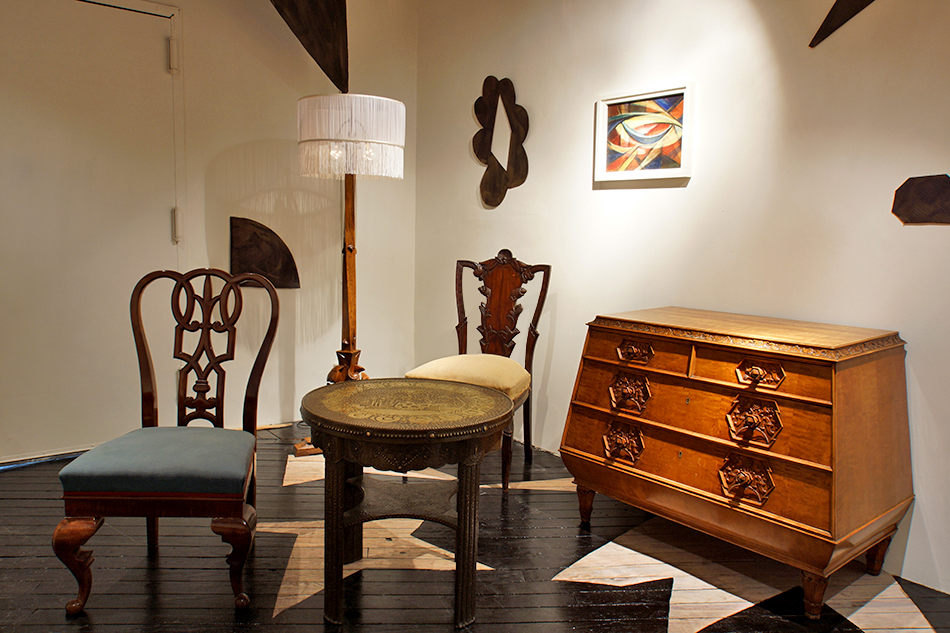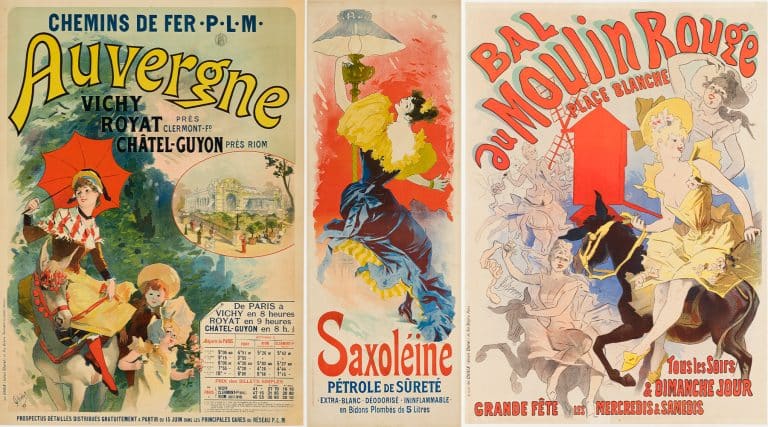
October 26, 2015Weimar Republic Germany is not the first place that springs to mind when one thinks of Art Deco design. The exhibition “Berlin Deko: German furniture 1910–1930” (top, photo by Jill Amadei), on display at Brian Kish in New York and presented by Lampedo, corrects that by highlighting masterful creations from the region, such as a carved and veneered birch chest of drawers, ca. 1918, by Karl Pullich (above). All images courtesy of Lampedo Inc.
When most people hear the term Art Deco, their thoughts turn to France (and the glamorous creations of such designers as Émile-Jacques Ruhlmann, Jean Dunand and Armand-Albert Rateau) or even the early skyscrapers of New York. But a new exhibition curated by dealer Markus Winter, of the New York gallery Lampedo, and held at the Brian Kish gallery in Manhattan’s Soho neighborhood, makes the case that furniture and decorative accessories designed by German architects in the same period are worthy of just as much attention. Working in a style that had many parallels with French Art Deco, the Germans pulled from a deep pool of inspiration to design works that were uniquely their own.
“There are fantastic pieces that demonstrate many influences and styles coming together,” Winter says of the objects in the show. Baroque and Asian elements make frequent appearances, often blending with the simplified forms and angular geometries seen in German expressionism or the creations of Austria’s Wiener Werkstätte. “It’s a wide mix, but there was a great consciousness about what was put together and how it was presented.”
German Art Deco has long been overshadowed by another movement that took shape in the country at the same time: the Bauhaus, which for decades influenced modernist ideas with its rational, less-is-more ideology. As a result, many of the country’s leading talents of the day from other movements, such as Oskar Kaufmann, Bruno Paul, Leo Nachtlicht, Emil Fahrenkamp, and Fritz August Breuhaus de Groot, are now relative unknowns. Kish and Winter’s exhibition, “Berlin Deko: German furniture 1910–1930” (through November 21), hopes to change that by rekindling interest in work that has largely been forgotten.

The 1917 stained-glass window by German expressionist César Klein with this panel depicting two men playing chess was commissioned for the game room of art collector Leo Lewin’s house in Breslau (now Wrocław, Poland).
The exhibition includes both selections on loan from private collections and pieces for sale, which together present a wide range of individual styles. Among the most reserved items is a hefty, clean-lined sideboard in stained birch and mahogany designed by Paul in 1928. Paul was one of Germany’s foremost architects of the early 20th century, and in addition to creating interiors with a stripped-down take on Biedermeier, he designed basic, standardized furniture for industrial production as early as 1908. He was also a revered teacher and mentor; among the designers who got their starts working in his office were Ludwig Mies van der Rohe and Kem Weber, both of whom helped shape early modernism in Europe and the United States.
Chairs designed in 1925 by the Hungarian-born architect Lajos Kozma embody the opposite of Paul’s approach, featuring a fanciful, almost whimsical amalgam of earlier ornate forms. “They’re bohemian baroque, but with a modern touch,” says Winter. “They look like they’re from a fairy tale.”
In between these extremes are a trove of other treasures, including a 1917 stained-glass window by the German expressionist painter César Klein, commissioned by architect Oskar Kaufmann for a residence he designed for noted art collector Leo Lewin, and a boldly geometric 1919 carved walnut chandelier by de Groot.
Kish, a dealer who normally specializes in Italian 20th-century design, was thrilled to host the exhibition after becoming intrigued by how such pieces inspired designers outside Germany’s borders in the years that followed. “They are early examples of things that would influence the Italians years later, particularly Giò Ponti,” he says. “We’re hoping the exhibition sheds some light on this forgotten period.”

